Named the best state park in South Carolina, Hunting Island State Park has so much to offer. With one of the only lighthouses in the state that is publicly accessible and active loggerhead sea turtle nests during summer months, Hunting Island is considered one of the best beaches on the east coast.
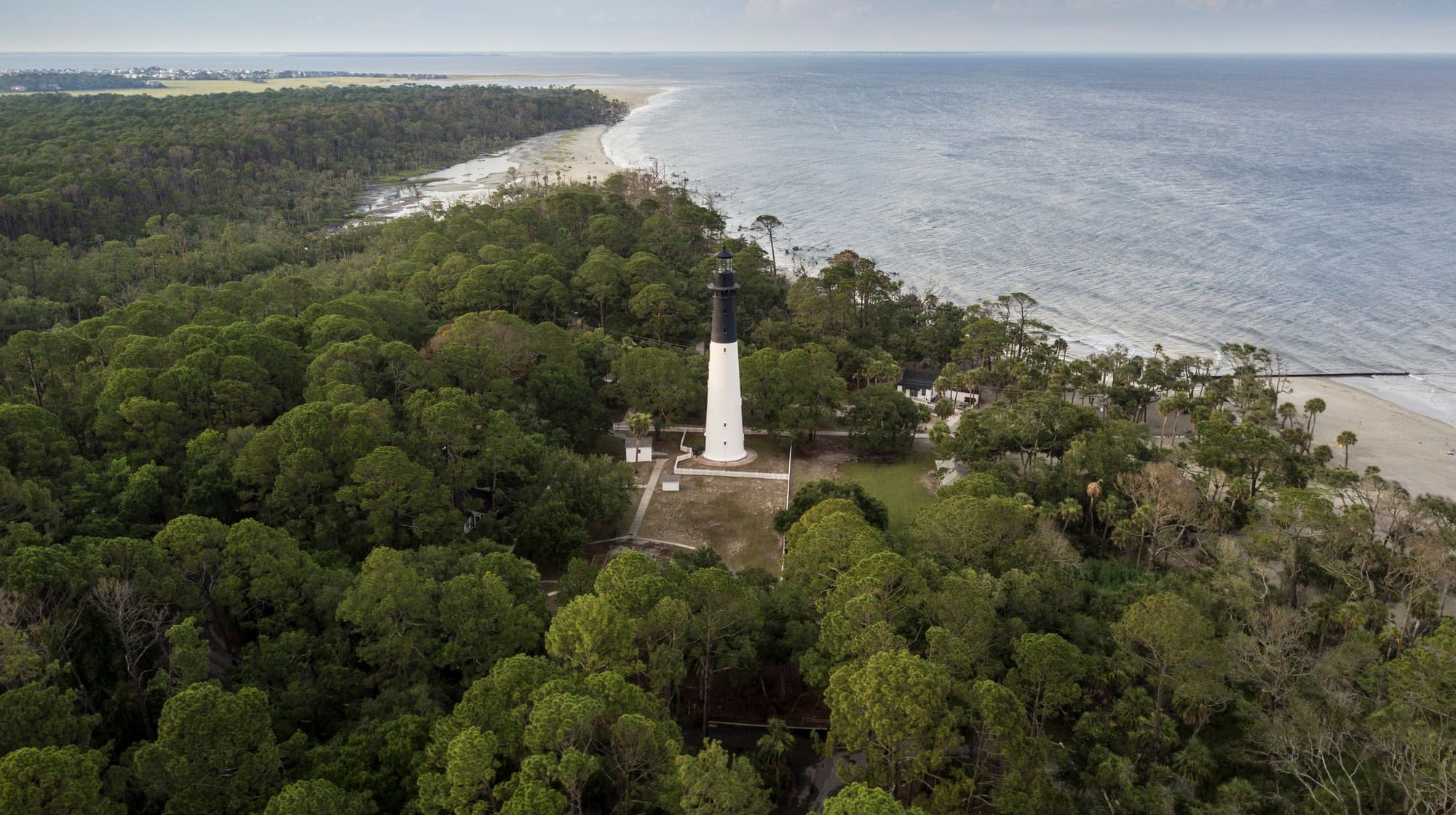
With miles of pristine beaches and sun-warmed Lowcountry waters, centuries of rich heritage and timeless adventure, Beaufort, South Carolina (SC) is more than a historic getaway. It’s a place that stays with you long after you leave.
We invite you to experience The Beaufort Inn and enjoy a complimentary Hunting Island beach pass (limited availability; first come, first serve) to the best state park in SC and one of the best beaches on the east coast.

Please note visiting hours may vary due to COVID-19.
The historic lighthouse at Hunting Island State Park is the only publicly accessible lighthouse in South Carolina.
For an admission of $2, visitors can climb the 167 steps and walk around the observation deck for a lofty view of the barrier island and surrounding seascape. CHILDREN MUST BE AT LEAST 44″ TALL TO CLIMB THE LIGHTHOUSE. Only six visitors may enter the lighthouse at one time, with staggered entrance, to provide a more unique visitor experience and to assist in preserving this historic structure.
The tower is open for climbing at 10 a.m. daily, with the last admission accepted at 4:45 p.m. each day during daylight saving time (peak season). During Eastern Standard Time (off-season), the tower opens for climbing at 10 a.m. daily, and the last admission is accepted at 3:45 p.m.
The lighthouse is closed on Christmas Day for climbing. Visitors may find the lighthouse closed during inclement weather due to safety concerns.
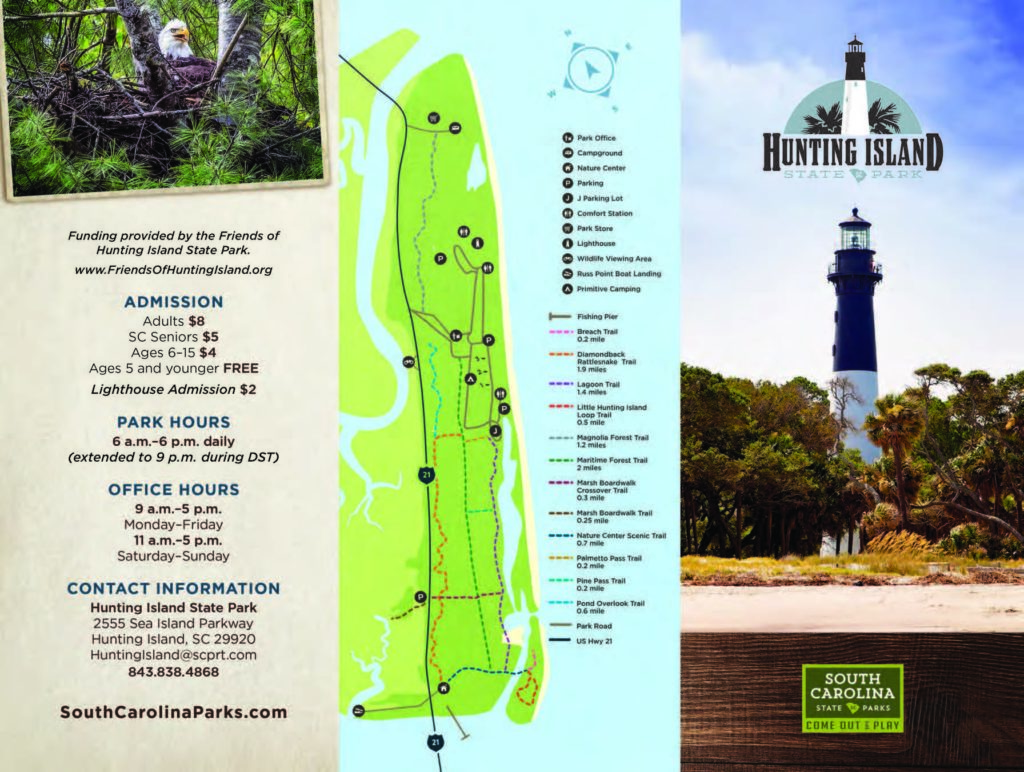
Length: 1.4 miles
Type: Hiking Trail
Difficulty: Easy
Description: This trail starts at the “J” parking and winds along the lagoon. It leads you through the maritime forest while providing scenic views of the lagoon and various wildlife habitats.
Length: 2.0 miles
Type: Hiking Trail
Difficulty: Easy
Description: This trail takes you deep into the interior maritime forest. You will see the dense vegetation that provides protected habitat for many animals including deer, raccoon, owls, hawks and squirrels.
Length: 0.2 miles
Type: Hiking Trail
Difficulty: Easy
Description: This trail connects the Lagoon Access Trail and the Maritime Forest.
Length: 0.3 miles
Type: Hiking Trail
Difficulty: Easy
Description: This connector trail intersects the Lagoon Access Recreation Trail, Maritime Forest Trail and the Diamondback Rattlesnake Trail to provide a path leading to the Marsh Boardwalk Trail.
Length: 0.25 miles
Type: Hiking Trail
Difficulty: Easy
Description: Designated a National Recreation Trail. This wooden boardwalk mixed with a crushed hardened surface is great for observing life in the salt marsh. The dock on the end provides an area for viewing magnificent sunsets.
Length: 0.7 miles
Type: Hiking Trail
Difficulty: Easy
Description: This trail provides access from the Nature Center to the Diamond Back Rattlesnake, Maritime Forest and Lagoon Recreation Access trails. It also provides access from the cabin area to the trail system. Make sure to walk the bridge over the lagoon to see its beauty from a different perspective.
Length: 1.2 miles
Type: Hiking Trail
Difficulty: Easy
Description: With natural terrain and some hilly surfaces, the trail will take you from the campground to the entrance gate of the daily beach access areas, lighthouse, visitor center and lagoon access. From the entrance gate, you will walk the roads of the park in order to reach the areas within, so be prepared for vehicle traffic. You are sure to see plenty of beautiful magnolia trees along the way.
Length: 0.6 miles
Type: Hiking Trail
Difficulty: Easy
Description: This trail starts from the Magnolia Forest Trail and ends at the Lighthouse parking area, providing campers with a route to the lighthouse without the worries of high tide or vehicle traffic. Featuring ancient rows of dunes as well as flatlands, populated by most of the island’s native plant and animal species, it is sure to provide enjoyment for hikers and bikers alike.
Length: 0.4 miles
Type: Hiking Trail
Difficulty: Easy
Description: This natural surface trail takes one along the edge of the forest to the ocean front. Hunting Island’s maritime forest of Live Oaks, Spanish moss and Palmetto trees can be easily seen along this trail.
Length: 2.3 miles
Type: Hiking and Mountain Biking Trail
Difficulty: Moderately Strenuous
Description: This trail is accessible from the Nature Center Scenic Trail and the Park Visitor Center. It is for experienced walkers and mountain bikes only. It is a moderately strenuous trail and has some difficult spots.
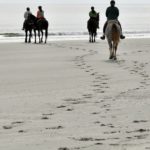
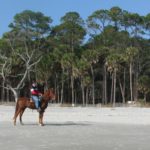
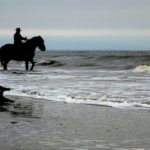
Horseback riding in South Carolina State Parks is a longtime favorite activity.
At Hunting Island State Park, you and your horse will find over four miles of coastal beach with breathtaking views, soft sand and ocean breezes. We recommend consulting the Tide Table as your best riding experience will be at low tide. Riding at Hunting Island Beach is available December, January and February, each year, and a permit is required. See below for rules and regulations.
Rules and Regulations
Our riding season is from December 1st through the last day of February
The cost of a permit is $25 per horse with a current Coggins Report
The permits are purchased at the Visitor Center
Parking is at South Beach and riding is only on the beach
Low tide allows the maximum space on the beach to ride
Riding on the trails is not permitted
Offsite Boarding
We recommend our friends at Camelot Farms for boarding if you are traveling a distance and want to enjoy a few days of riding. Their location on St. Helena Island is less than 15 minutes away.
In 2017, volunteers located and protected 106 loggerhead nests in the six zones of the Hunting Island State Park Beach. Approximately 5275 young turtles successfully hatched, assisted by our efforts.
If you would like to walk as a visitor with a turtle patrol team any morning(s) June through September, please email [email protected] for more information on when and where to meet.
Oops! We could not locate your form.
